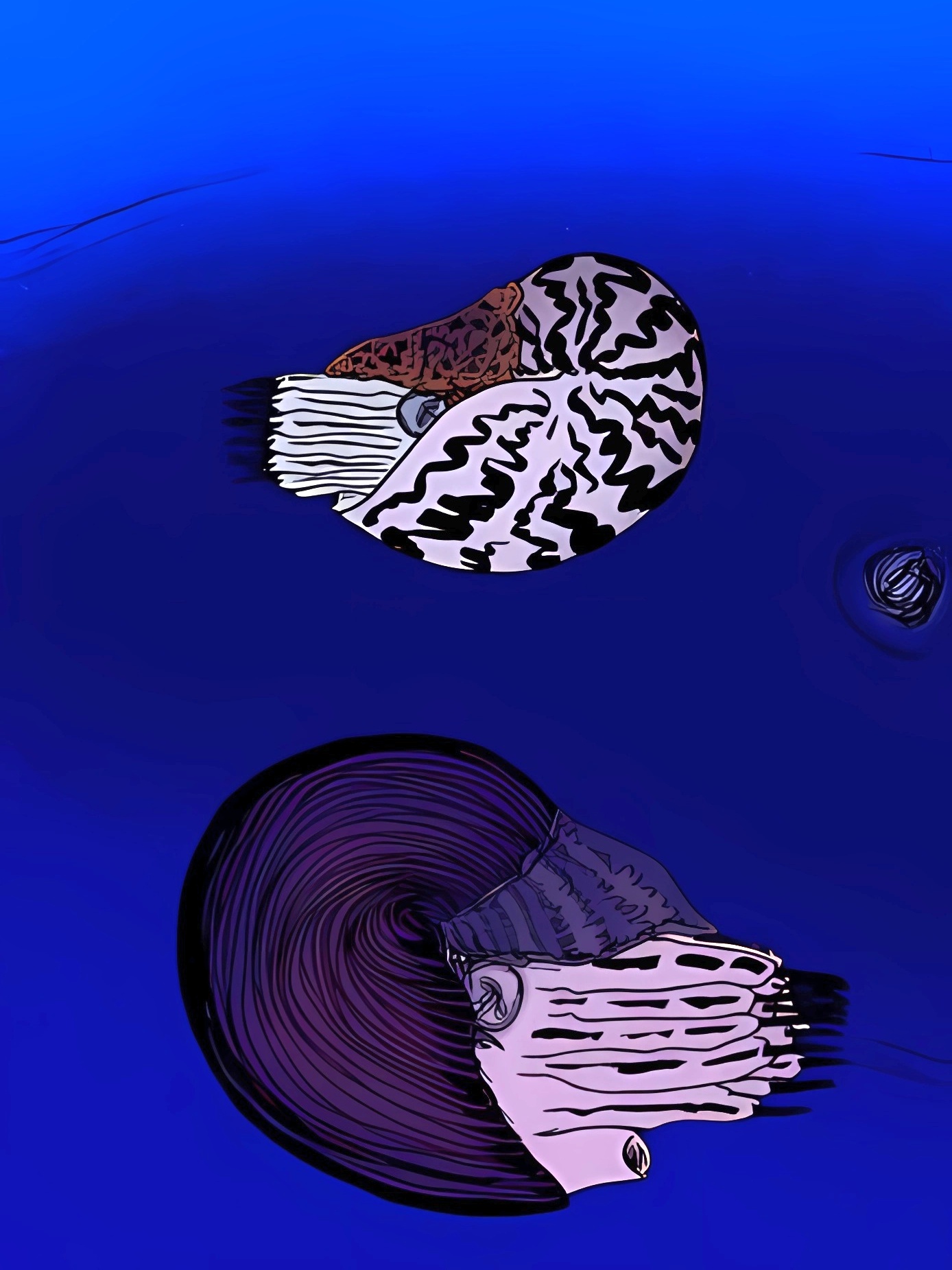|
Aturia (cephalopod)
''Aturia'' is an extinct genus of Paleocene to Miocene nautilids within Aturiidae, a monotypic family, established by Campman in 1857 for ''Aturia'' Bronn, 1838, and is included in the superfamily Nautilaceae in Kümmel 1964. ''Aturia'' is characterized by a smooth, highly involute, discoidal shell with a complex suture and subdorsal siphuncle. The shell of ''Aturia'' is rounded ventrally and flattened laterally; the dorsum is deeply impressed. The suture, one of the most complex in the Nautiloidea, has a broad flattened ventral saddle, narrow pointed lateral lobes, broad rounded lateral saddles, broad lobes on the dorso-umbilical slopes, and a broad dorsal saddle divided by a deep, narrow median lobe. The siphuncle is moderate in size and located subdorsally in the adapical dorsal flexture of the septum. Based on the feeding and hunting behaviors of living nautiluses, ''Aturia'' most likely preyed upon small fish and crustaceans. ''Aturia'' is likely derived from species ... [...More Info...] [...Related Items...] OR: [Wikipedia] [Google] [Baidu] |
Paleocene
The Paleocene, ( ) or Palaeocene, is a geological epoch (geology), epoch that lasted from about 66 to 56 mya (unit), million years ago (mya). It is the first epoch of the Paleogene Period (geology), Period in the modern Cenozoic Era (geology), Era. The name is a combination of the Ancient Greek ''palaiós'' meaning "old" and the Eocene Epoch (which succeeds the Paleocene), translating to "the old part of the Eocene". The epoch is bracketed by two major events in Earth's history. The K–Pg extinction event, brought on by Chicxulub impact, an asteroid impact and possibly volcanism, marked the beginning of the Paleocene and killed off 75% of living species, most famously the non-avian dinosaurs. The end of the epoch was marked by the Paleocene–Eocene Thermal Maximum (PETM), which was a major climatic event wherein about 2,500–4,500 gigatons of carbon were released into the atmosphere and ocean systems, causing a spike in global temperatures and ocean acidification. In the Pal ... [...More Info...] [...Related Items...] OR: [Wikipedia] [Google] [Baidu] |

